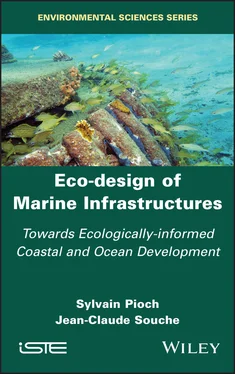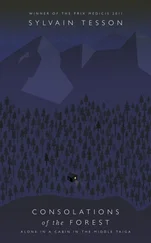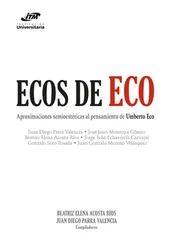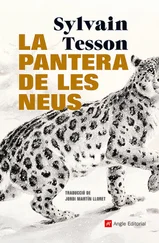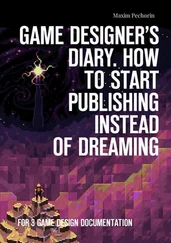5 Foreword
6 Preface
7 Acknowledgments
8 Begin Reading
9 Conclusion
10 References
11 Index
12 Other titles from iSTE in Ecological Science
1 v
2 iii
3 iv
4 ix
5 x
6 xi
7 xii
8 xiii
9 xiv
10 xv
11 xvi
12 1
13 2
14 3
15 4
16 5
17 6
18 7
19 8
20 9
21 10
22 11
23 12
24 13
25 14
26 15
27 16
28 17
29 18
30 19
31 20
32 21
33 22
34 23
35 24
36 25
37 27
38 28
39 29
40 30
41 31
42 32
43 33
44 34
45 35
46 36
47 37
48 38
49 39
50 40
51 41
52 42
53 43
54 44
55 45
56 46
57 47
58 48
59 49
60 50
61 51
62 52
63 53
64 54
65 55
66 56
67 57
68 58
69 59
70 60
71 61
72 62
73 63
74 64
75 65
76 66
77 67
78 68
79 69
80 70
81 71
82 72
83 73
84 74
85 75
86 76
87 77
88 78
89 79
90 80
91 81
92 82
93 83
94 84
95 85
96 86
97 87
98 88
99 89
100 90
101 91
102 92
103 93
104 94
105 95
106 96
107 97
108 98
109 99
110 100
111 101
112 102
113 103
114 104
115 105
116 106
117 107
118 108
119 109
120 110
121 111
122 112
123 113
124 114
125 115
126 116
127 117
128 118
129 119
130 120
131 121
132 122
133 123
134 124
135 125
136 126
137 127
138 128
139 129
140 130
141 131
142 132
143 133
144 134
145 135
146 136
147 137
148 138
149 139
150 140
151 141
152 142
153 143
154 144
155 145
156 146
157 147
158 148
159 149
160 150
161 151
162 152
163 153
164 154
165 155
166 156
167 157
168 158
169 159
170 160
171 161
172 162
173 163
174 164
175 165
176 166
177 167
178 168
179 169
180 170
181 171
182 172
183 173
184 174
185 175
186 176
187 177
188 178
189 179
190 180
191 181
192 182
193 183
194 184
195 185
196 186
197 187
198 188
199 189
200 190
201 191
202 192
203 193
204 194
205 195
206 196
207 197
208 198
209 199
210 200
211 201
212 202
213 203
214 204
215 205
216 206
217 207
218 208
219 209
220 210
221 211
222 212
223 213
224 214
225 215
226 216
227 217
228 218
229 219
230 220
231 221
232 222
233 223
234 224
235 225
236 226
237 227
238 228
239 229
240 230
241 231
242 232
243 233
244 234
245 235
246 236
247 237
248 238
249 239
250 240
251 241
252 242
253 243
254 244
255 245
256 246
257 247
258 248
259 249
260 250
261 251
262 252
263 253
264 254
265 255
266 256
267 257
268 258
269 259
270 260
271 261
272 262
273 263
274 264
Series EditorFrançoise Gaill
Eco-design of Marine Infrastructures
Towards Ecologically-informed Coastal and Ocean Development
Sylvain Pioch
Jean-Claude Souche

First published 2021 in Great Britain and the United States by ISTE Ltd and John Wiley & Sons, Inc.
Apart from any fair dealing for the purposes of research or private study, or criticism or review, as permitted under the Copyright, Designs and Patents Act 1988, this publication may only be reproduced, stored or transmitted, in any form or by any means, with the prior permission in writing of the publishers, or in the case of reprographic reproduction in accordance with the terms and licenses issued by the CLA. Enquiries concerning reproduction outside these terms should be sent to the publishers at the undermentioned address:
ISTE Ltd
27-37 St George’s Road
London SW19 4EU
UK
www.iste.co.uk
John Wiley & Sons, Inc.
111 River Street
Hoboken, NJ 07030
USA
www.wiley.com
© ISTE Ltd 2021
The rights of Sylvain Pioch and Jean-Claude Souche to be identified as the authors of this work have been asserted by them in accordance with the Copyright, Designs and Patents Act 1988.
Library of Congress Control Number: 2021940543
British Library Cataloguing-in-Publication Data
A CIP record for this book is available from the British Library
ISBN 978-1-78630-711-8
Grown-ups never understand anything by themselves, and it is tiresome for children to be always and forever explaining things to them.
Antoine de Saint-Exupéry
Our planet and our ecosystems are in danger and we must act. Of course, we hear this message every day and most of us are now aware of it. However, it is not easy to exactly identify the different challenges ahead, and it is even less easy to act accordingly.
Intended for a wide audience, this book can help provide answers. It presents, through concrete examples and testimonies, an exhaustive state of the art allowing everyone to better understand marine eco-design and the issues it addresses. It also proposes a methodology for acting differently. Although this book is primarily intended for technicians, engineers, scientists and students, it may be of interest to anyone who is curious to see how we can “develop” by taking inspiration from nature. For this book is not only the story of two men of art, it is also the work of two marine enthusiasts who, for more than 30 years, have been working for the preservation of the seabed; passionate people who have spent hundreds of hours in the water observing, marveling at marine life and trying to understand the combination of elements and the consequences on biodiversity. I have shared this passion with them for many years.
Through this book, Sylvain and Jean-Claude, who are great professionals and long-time friends, will share their universe with you. Through concrete experiences, you will discover the marine world, see through their eyes the underwater biotope and how to preserve it and perhaps feel its mysteries in order to reconcile what seems irreconcilable: the human impact of a maritime infrastructure and the preservation of biodiversity. Sylvain Pioch combines both a sixth sense of this wilderness and an exceptional scientific knowledge. His ability to understand and predict the behavior of fish and marine life will always amaze me. He is, at the same time, a renowned professor, a researcher and a talented designer, recognized throughout the world. Jean-Claude Souche is the one who makes it possible to transform concepts into sustainable developments and infrastructures. Today, Jean-Claude is a professor at IMT Mines Alès, a French engineering school, where he heads the civil engineering and sustainable building department. His international experience in marine works, his operational background as an engineer and doctor and his unwavering will to move forward make him a valuable person. With their common conviction, on a professional level, Sylvain and Jean-Claude are incredibly complementary. In this book, they have produced a thorough work on the eco-design of marine infrastructures, which for them is definitive work. This book highlights one of the great challenges of our century, that of preserving marine biodiversity through our land use planning policy and the construction of coastal and port infrastructures. The protection of the environment in terms of maritime development is no longer based on simple compensatory measures, but must, by definition for any project, preserve and promote the development of life and its diversity. I am deeply convinced that project owners, engineers, scientists and contractors can and must play a major role in promoting biodiversity and thus protecting the marine environment. One of the major challenges to come will be to know how to create industrial policies that are economically efficient and respectful of our environment. It is no longer a question of opposing environment and economy or human technology and nature, but, on the contrary, of reconciling them. This requires skill and conviction. Even though science and technology are not the only solution to the problems of today’s world, they provide technical innovation that can lead to changes in human behavior. This is the goal of this book, to allow as many people as possible to understand the stakes, to act intelligently and, finally, to think differently.
Читать дальше
